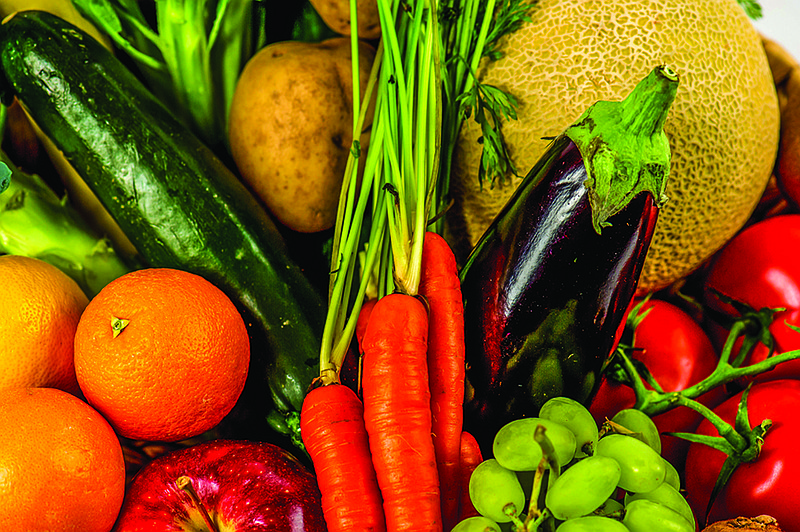One of the many ways we can improve our health is by what we choose to put on our plate, and eating fruits and vegetables is associated with long-term health benefits. Harvard T. H. Chan's School of Public Health's nutrition blog, "The Nutrition Source," reminds us of three truths: 1) vegetables and fruits are an important part of a healthy diet; 2) variety is as important as quantity; and 3) no single fruit or vegetable provides all the nutrients you need to be healthy. In other words, there are no "super foods" but rather "super patterns" for healthy eating.
Sadly, we Americans have a lot of room for improvement in how we fill our plates. The Centers for Disease Control reported last year that only one in 10 adults were meeting the federal recommendations for 1 1/2-2 cups of fruit and 2-3 cups of vegetables each day.
On the question of whether to buy organic or conventionally-grown fruits and vegetables, consumers can feel confident about purchasing either or both despite misinformation shared widely on social media and by individuals who have little education or expertise in agriculture or toxicology science. Just last week, "The Dirty Dozen" list was distributed by the Environmental Working Group, a nongovernmental organization dedicated to promotion of organic-only production methods. This group presents USDA data in a misleading manner, prompting unfounded fears among consumers about the safety of conventionally-grown, less-expensive fruits and vegetables. As a registered dietitian who values evidence- and science-based information for patients and consumers, I appreciated an article, "The Inconvenient Truth About The Environmental Working Group's Dirty Dozen List," by Steven Savage, whose degrees include a Bachelor of Science in biology and a master's and doctorate in plant pathology. Savage dives into the details to explore the nuances of the science and how USDA data is misrepresented (manipulated) by the EWG.
From a toxicology and food science viewpoint, researchers have also challenged the EWG's annual list and misrepresentation of data for years. Entitled "Dietary Exposure to Pesticide Residues from Commodities Alleged to Contain the Highest Contamination Level," researchers stated " our findings do not indicate that substituting organic forms of the 'Dirty Dozen' commodities for conventional forms will lead to any measurable consumer health benefit."
Statistical data is sometimes difficult for us to translate into real-life practical understanding. A helpful resource is the pesticide residue calculator sponsored by the Alliance for Food and Farming (safefruitsandveggies.com/pesticide-calculator). It's easy to use the interactive calculator to discover how many servings of any fruit or vegetable one would have to eat before reaching a level of risk or concern.
Bottom line: It's OK to purchase organic produce, however, savvy and informed consumers may feel confident purchasing lower-priced conventionally-grown produce knowing science and evidence supports their decision. No matter whether organic or conventionally-grown, always wash produce before eating and enjoy frequently for long-term health benefits.
Lisa L. Finley, RD, LD is the program coordinator for the Weight Management Center at Jefferson City Medical Group.


